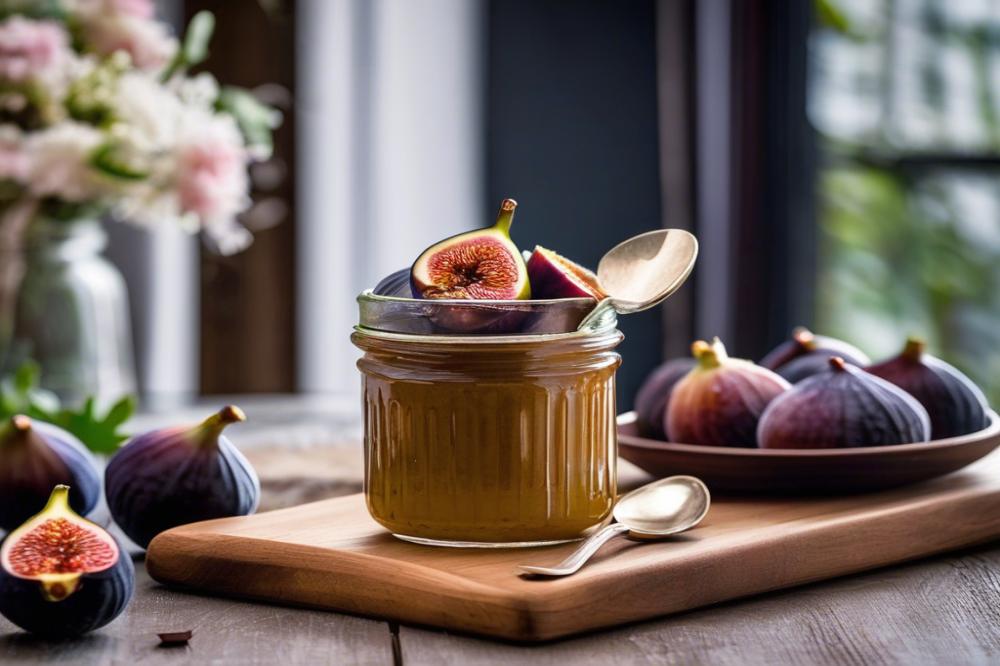Introduction
Glyko Koutaliou Figs serve as a classic Greek dessert that embodies the essence of Mediterranean cuisine. Many enjoy the tradition of preserving figs in syrup, a practice treasured across generations in Greece. This method not only captures the taste of ripe fruit but also holds a special place in the hearts of those who savor it.
Homemade sweets often take center stage in Greek culture, and fig preserves are no exception. These sweet preserves showcase the rich flavor and velvety texture of figs that many have come to love. As a result, they create an ideal addition to various meals or a delightful snack on their own.
Through traditional recipes passed down through the years, these figs in syrup transform simple fruits into a luxurious treat. The combination of figs and sugar syrup produces an exquisite balance of sweetness. Families often take pride in crafting their own version of this delicious condiment, making it a staple at gatherings and special occasions.
Ultimately, enjoying fig preserves highlights a connection to heritage while promoting the idea of healthy desserts. This love for incorporating seasonal fruit into recipes enhances the Mediterranean diet. As you explore the art of creating this spoon sweet, you will tap into a rich culinary tradition that tastes just as good as it feels.
Understanding Glyko Koutaliou Figs
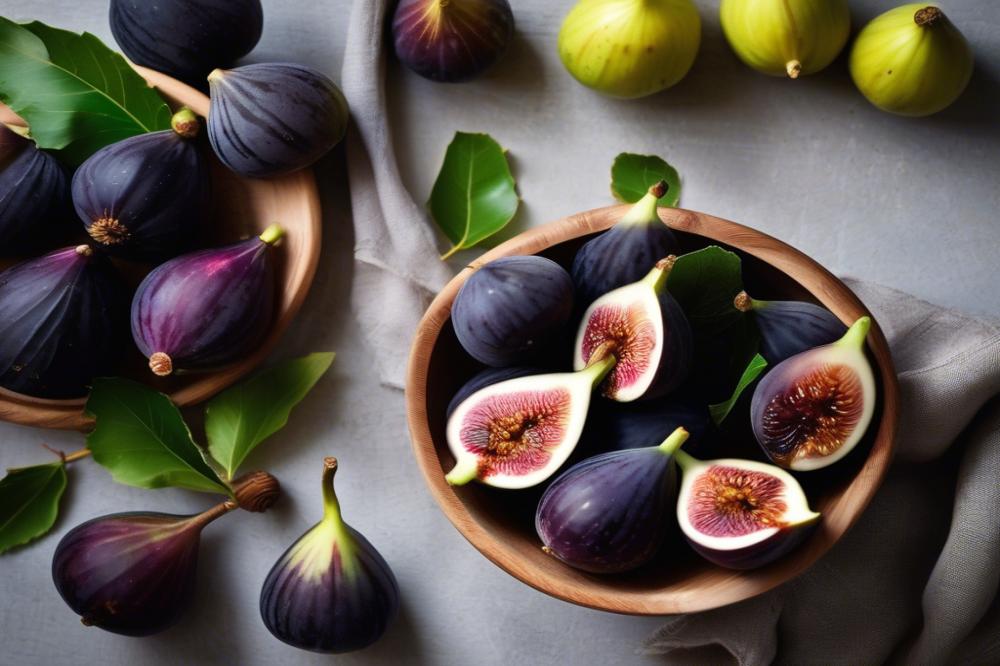
Glyko Koutaliou Figs are a beloved type of Greek dessert known for their rich sweetness and delightful texture. These fig preserves are often served as a treat at special gatherings or simply enjoyed at home. Traditional recipes have kept this treat alive, showcasing the importance of figs in syrup within Mediterranean cuisine.
The history of spoon sweets in Greece dates back centuries. This culinary tradition reflects the culture’s resourcefulness and creativity. Many households have their own unique techniques for making these homemade sweets. Often, families gather to share recipes passed down through generations. This practice not only preserves flavors but also fosters family connections.
Figs, as a fruit, hold a special place in Greek hearts. They are not only delicious but also packed with nutrients. High in fiber, figs support digestion and overall health. Their natural sweetness adds a comforting element to healthy desserts. Added to sugar syrup, they transform into luscious fruit preserves that can elevate any meal.
In addition to their health benefits, figs contribute to a sense of nostalgia. Many Greeks associate these sweet preserves with summer harvests and joyful celebrations. Whether served on a spoon or enjoyed straight from the jar, they encapsulate the spirit of shared moments. This is why they are integral to many festivals and feasts.
Overall, the tradition of enjoying figs in syrup reflects a deep appreciation of simple yet flavorful ingredients. They not only delight the palate but also carry stories of love and heritage. By making these sweet treats at home, everyone can partake in this rich culinary narrative.
Ingredients and Cooking Instructions
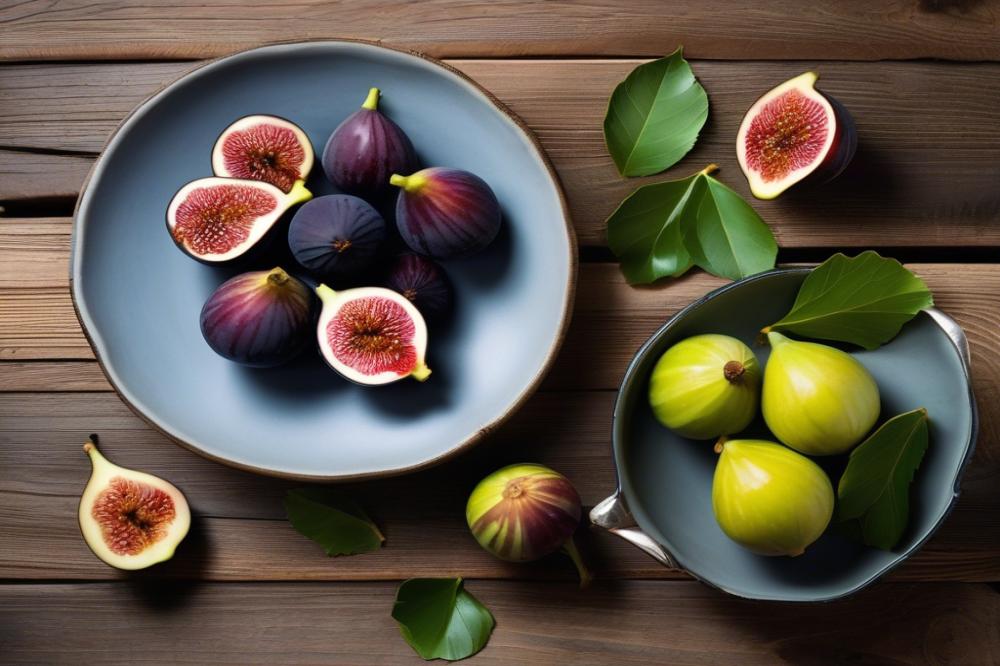
Preparing traditional fig preserves at home can be extremely rewarding. You will need a few simple ingredients to create this delightful Greek dessert. Here’s what you’ll want to have on hand:
- Fresh figs (about 1 kg)
- Sugar (600 grams)
- Water (500 mL)
- Lemon juice (from 1 lemon)
- Optional: a cinnamon stick or cloves for added flavor
Now, let’s dive into the step-by-step cooking instructions to make this delicious fruit preserve.
Start by washing the figs thoroughly. Remove the stems carefully. This is essential for clean, sweet preserves. In a medium-sized pot, combine the water and sugar. This will create a sugar syrup that is the base of your fig preserves.
Once your sugar syrup is ready, gently add the figs to the pot. Cook everything over low heat. Patience is important here; this allows the figs to absorb the syrup beautifully. As the figs soften, stir in the fresh lemon juice. The citrus will brighten the flavors wonderfully.
If you decided to use optional spices, now is the perfect time to add the cinnamon stick or cloves. These spices will infuse a lovely aroma and depth to your fig preserves. Continue cooking until the figs are tender and the syrup thickens nicely.
Afterward, prepare for storing your homemade sweets. Carefully bottle the hot mixture in clean jars. Seal them well to preserve the flavors. This is a delightful way to enjoy figs in syrup, perfect for pairing with yogurt or just eating straight from the jar as a healthy dessert.
Nutritional Information
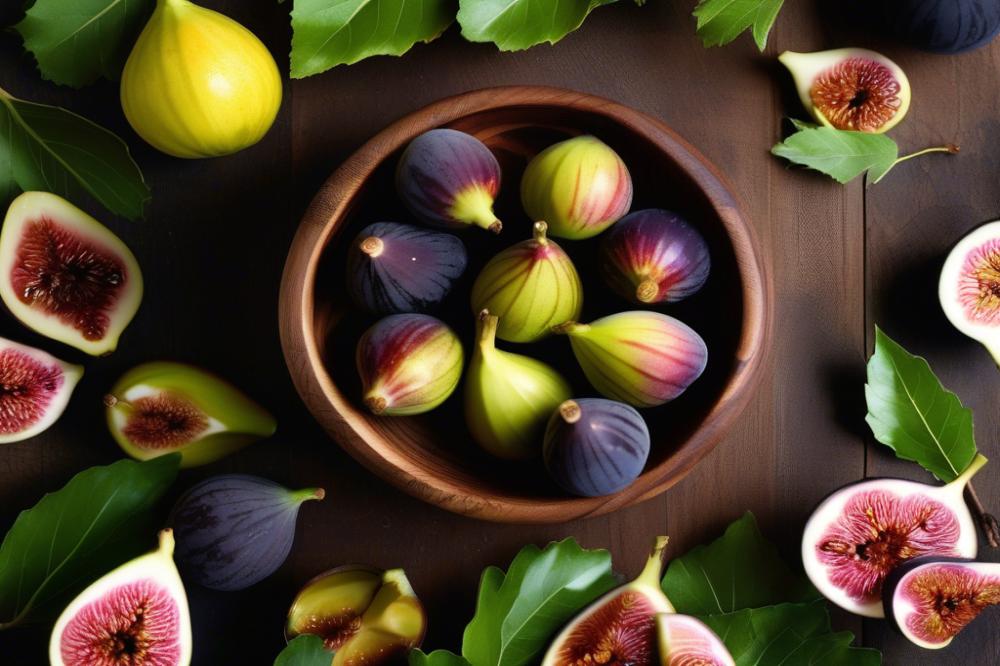
Understanding the nutritional values of the ingredients in Glyko Koutaliou Figs can enhance your appreciation for this traditional Greek dessert. Figs themselves are naturally rich in several nutrients. They are an excellent source of fiber, providing about 3.7 grams per 100 grams. This fiber plays a significant role in digestive health, promoting regularity and a healthy gut.
In addition to fiber, figs contain a variety of vitamins and minerals. They are particularly high in potassium, which is essential for heart function and maintaining healthy blood pressure levels. Antioxidants found in figs, such as flavonoids and phenolic acids, contribute to fighting free radicals in the body. This can help reduce inflammation and lower the risk of chronic diseases.
Sugar Content in Preserves
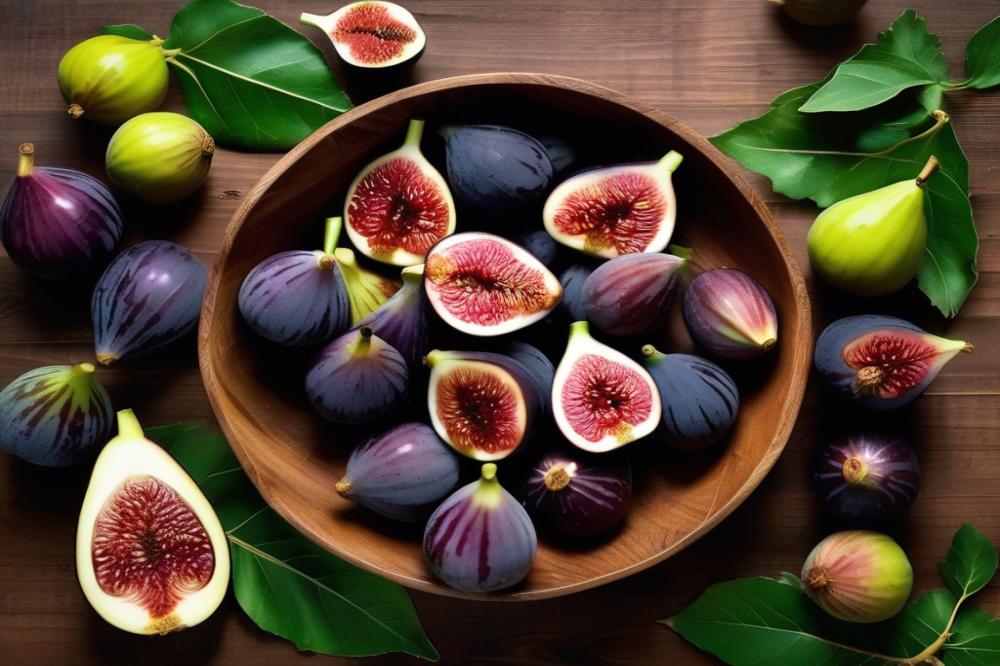
When making fig preserves, it’s important to consider the sugar used. Typical recipes combine figs with a significant amount of sugar, often making it a sweet treat. On average, fig preserves can contain around 50 to 60 grams of sugar per 100 grams. This sugar syrup can create a deliciously thick and sweet texture, but it’s worth being mindful of the calorie intake.
Health-conscious individuals may look for alternatives to traditional sugar when preparing homemade sweets. Options like honey or agave syrup can provide sweetness with potential benefits. For instance, honey has antibacterial properties and can improve gut health. Experimenting with these alternatives may yield a unique twist on classic fig preserves.
Exploring Healthy Desserts
Even with sweet preserves, enjoying figs in moderation can lead to a balanced diet. The Mediterranean cuisine often highlights how fruit preserves can be part of healthy eating. They can serve as a topping for yogurt or a filling for pastries. Incorporating fruit into desserts offers sweetness along with vital nutrients.
Making figs in syrup at home allows control over sugar content. This not only retails the sweetness but can also enhance the ability to create customized flavors. Traditional recipes often include spices like cinnamon or clove, further enriching the health benefits and taste profile.
Enhancing Your Glyko Koutaliou Figs
When it comes to customizing the flavor of figs in syrup, there are plenty of options. Adding a sprinkle of cinnamon can bring warmth to the dish. For those who enjoy a bit of zest, incorporating lemon zest can brighten the sweetness. Consider using cardamom for its unique aroma and slight spiciness. Each spice can elevate the natural flavors of the figs.
In Mediterranean cuisine, the balance of flavors is crucial. Some people enjoy a hint of clove as well. This spice adds a deeper, more complex note to the mix. Experimenting with a dash of nutmeg might surprise your taste buds, too. Each addition can transform fig preserves into something even more special.
Herbs also offer exciting possibilities. Thyme could lend a savory twist to the sweet preserves. A few fresh mint leaves could provide a refreshing contrast, enhancing the overall experience. Choose your herbs based on the season or your personal preference.
Pairing these fig concoctions with traditional Greek foods can be delightful. Serve the sweet preserves on a cheese platter alongside feta and olives. This combination creates a beautiful balance between sweet and salty. For dessert lovers, these figs complement yogurt perfectly. Top your yogurt with figs to create a quick and healthy dessert.
More adventurous souls might try serving Glyko Koutaliou with ice cream. The creamy texture pairs nicely with the rich, sweet syrup. Alternatively, you may want to add them as a topping for pancakes or waffles. This adds a Mediterranean twist to a classic breakfast.
When making homemade sweets, the choices truly are endless. Dipping figs in dark chocolate before placing them in the syrup creates a luxurious treat. This combination of flavors can wow your guests at any gathering. Each suggestion allows you to craft a unique dish tailored to your taste.
With so many options available, customizing your fig recipe can be both fun and rewarding. Each tweak allows you to create something that feels both personal and delicious. Whether you stick to traditional recipes or add your twist, the possibilities are vast. Enjoy the process of discovering what works best for you!
Storage and Serving Suggestions
Storing fig preserves properly is essential for maintaining their delightful flavor and consistency. After preparing your homemade sweets, allow them to cool completely. Then, transfer the syrupy figs into clean, sterilized jars. A tight seal is important. Store these jars in a cool, dark place. Ideally, you want them to last for several months without losing taste. Refrigeration is not necessary until you open a jar, but it does extend freshness once unsealed.
When it comes to serving, Glyko Koutaliou is versatile and can be enjoyed in various ways. A popular method involves offering it in small bowls, paired with a spoon. This was how dessert was traditionally served in Greek hospitality. Guests appreciate the chance to savor these sweet preserves with their tea or coffee. For a modern twist, consider presenting figs in syrup over yogurt or ice cream. This combination creates a pleasing contrast of flavors and textures.
In Mediterranean cuisine, fig preserves hold a special place. They symbolize warmth and generosity in Greek culture. Fig sweets are often presented at gatherings, celebrations, and religious occasions. Embracing this tradition can add a heartfelt touch to any meal. They can be served alongside cheese for a delightful appetizer, showcasing the sweet and savory dynamics of the dish. This approach highlights fig preserves as a key component of Greek hospitality.
Healthy desserts can also incorporate these delectable figs. With their natural sweetness, they fit into many dietary choices. Spread them on toast for breakfast or use them as a filling in pastries. The possibilities are endless. Whichever way you choose to enjoy your fig preserves, remember that they tell a story of love and tradition.
Wrapping Up the Sweet Tradition
Greek cuisine thrives on its rich history and cultural significance, with many dishes telling stories of the past. Fig preserves, like the ones made from this traditional recipe, hold a special place in households across Greece. In many ways, they represent more than just a sweet treat; they reflect a connection to family and heritage.
Making this homemade Greek dessert provides an opportunity to engage with age-old traditions. It allows you to immerse yourself in the flavors that have delighted countless generations. Preparing this dish can be a wonderful bonding experience, whether you involve family or friends. As you carefully follow each step, you can feel the heart of Greece in your kitchen.
Exploring other fruit preserves can further deepen your appreciation for Greek cuisine. Each fruit offers different tastes and benefits, inviting you into a world of flavors. Beyond figs, consider trying preserves made from cherries, oranges, or even quinces. Each recipe carries its own charm and cultural background.
Creating traditional recipes at home is not just about following instructions. It’s about embracing the joy of cooking and the stories behind each dish. Moreover, it reinforces the notion of sharing, which is central to Greek dining culture. So, why not give this a try? Your connection to these culinary traditions awaits.

